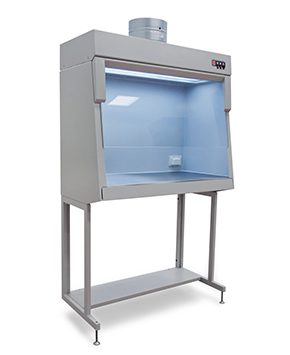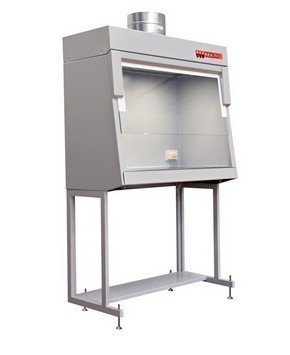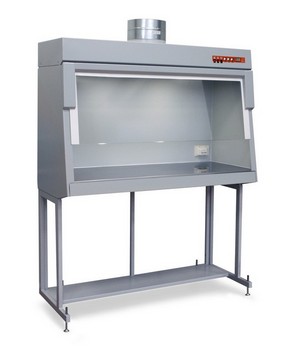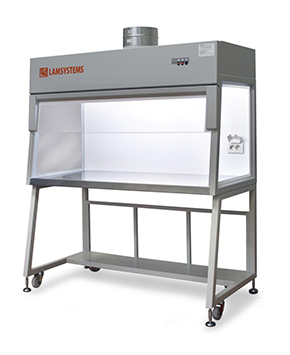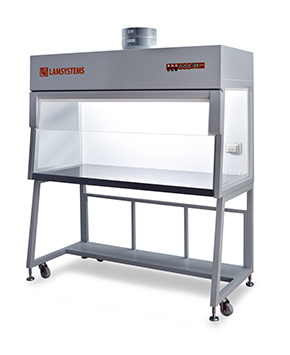Laboratory Fume Hoods for Scientific Research for Scientific Research
A fume hood is laboratory equipment used to get rid of the fumes and toxins from the workplace.
- All-metal frame;
- Side windows made of metal;
- Illumination lamp with protection screen
- Built in vent fan
1Е-E.001-10.0
1020х600х1920
- All-metal frame;
- Side windows made of metal;
- Illumination lamp with protection screen
- Built in vent fan
- UV unit
1Е-E.002-10.0
1020х621х1920
- All-metal frame;
- Side windows made of metal;
- Illumination lamp with protection screen
- Built in vent fan
1Е-E.002-13.0
1315х621х1920
- All-metal frame;
- Side windows made of tempered glass;
- Illumination lamp with protection screen
- Built in vent fan
1Е-E.001-15.0
1500х770х1880
- All-metal frame;
- Side windows made of tempered glass;
- Illumination lamp with protection screen
- Built in vent fan
- UV unit
1Е-E.002-15.0
1500х770х1880
Introduction
The primary function of the laboratory fume cabinet is to protect personnel from toxic exhalation or dust. Usually, the hood is just a part of the lab ventilation system, serving to limit the toxic air to non-laboratory areas. Fume hoods from “Lamsystems” have a modern design that helps to cut energy ventilation costs. Our company is a manufacturer the most cost-effective and economical equipment which provide a complete combination of protection, safety, reliability, and a great efficiency. They are sold in a wide range of industries worldwide, e.g. pharmacy, medicine, research, electronics, etc.
How do they work?
A bench top of our facilities has an exhaust fan installed on the top of the hood to draw the airborne chemicals and then diluting them through the ducts. Enough volume of air should be available in the room to extract hazardous vapors from the air.
Specifications
- A front window sash of the hood made up of tempered glass that acts as a shield for the operator against hazardous aerosols.
- A stainless steel sink installed inside the fume hood which is resistant to the vapors produced in the work area.
- Lateral surfaces of the hood work chamber made of tempered glass provide additional visibility.
- Auxiliary exhaust fan which removes unsafe particles, dusts and mists from the air inside a fume hood.
- All the control devices are located on the front panel of the hood preventing any contact of an operator with the hazardous environment.
Special Fume Hood
These fume cabinets are used for purposes beyond the scope of general fume chambers. They can be divided into several categories, for example:
-
Perchloric acid. A special fume hood like this has a proper water wash system that washes out all the residual toxins on the side walls of the cabinets. The water spray system is effective to remove any perchloric acids or fumes built up inside the hoods.
-
Walk-in. This hood is mainly used for large pieces of testing appliances.
-
Canopy. This is suitable for processes that produce more heat and nontoxic gases that have an upward direction.
-
Radioisotope. Their main purpose is to handle radioactive experiments. Such a fume hood is designed with shields that are resistant to poisonous aerosols and chemicals.
Final Statement
- To ensure safety, the fume hoods must be operated with extreme care.
- The person must know how to operate a equipment accurately.
- He should make sure that the fume cabinet is properly tested before using it.
- Fume hoods must be inspected after an installation or repair to avoid any disruptions.
- They should be used when dealing with chemicals.
- The operator must wear a lab coat and gloves while working to avoid any bodily harm.
- No extra materials such as paper should go inside the ducts because it might obstruct air exhausting.
- The appropriate type of lab fume cabinet must be bought keeping the type of techniques, budget, safety levels, and energy consumption levels in mind.
- For providing the highest level of protection to personnel, a laboratory equipment may need periodic or annual inspections for proper maintenance. A periodic inspection will help to extend the product service time and prevent potential risks of inhalation of biological agents or chemicals.
To find out what kind of fume hood suits your needs best, and to get all the details and prices, please contact our specialists.
